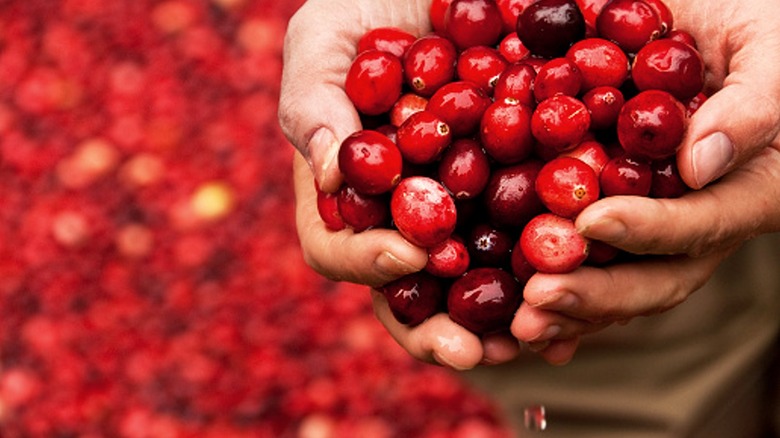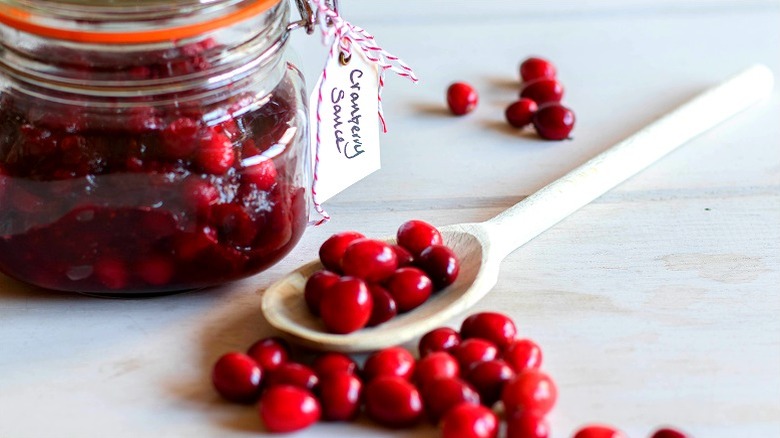Why You Should Eat Cranberries On Indigenous Peoples' Day
Indigenous People's Day in the land called the United States recognizes and honors the original peoples of North America. It's a wonderful time to engage with Indigenous history and think about our relationship to the food grown on this land.
The cranberry is an indigenous fruit to the U.S. and is in the same genus as blueberries. Cranberries grow in the Northern United States, with Wisconsin producing more than any other state (World Population Review). Cranberries grow in low vines in wetlands and are harvested when farmers flood the bogs, causing the berries to float at the top. This tart berry has become a large part of Christmas and Thanksgiving celebrations, but cranberries also have a rich history and ties to Indigenous peoples.
The Aquinnah Wampanoag typically celebrate Cranberry Day on the second Tuesday of October. Traditionally, it was a days-long event that rejoiced in the harvest and gave thanks to the earth and their Creator (Aquinnah Wampanoag Nation). The festivities include picking cranberries, telling stories by the fire, dancing, singing, and hosting a potluck for members of the community. Today, you can reflect on Indigenous people's contributions to the land and culinary world by making your own cranberry dishes at home.
Cranberries add flavor to a variety of Indigenous dishes
One cranberry recipe you can try is the Indigenous dish pemmican. This simple recipe works best with using game like deer, buffalo, or elk, but many modern takes on this recipe use beef. The meat is dried and ground up with cranberries in melted fat before sitting to cool in a brownie-like shape.
If you're vegetarian, then don't worry — there are plenty of cranberry dishes you can enjoy, such as mixed berry scones. Indigenous elder Joan Tavares Avant is a Wampanoag scholar whose cranberry desserts will impress your friends at any event. Try making banana cranberry biscuits, cranberry coffee cake, or cranberry pie for a sweet and spectacular treat.
Award-winning chef and food educator Sean Sherman is a part of the Oglala Lakota Sioux tribe, and his wojape recipe only requires cranberries, maple syrup, and rose hips. Wojape is a traditional cranberry sauce, and Chef Sherman believes in using ingredients native to the land. You can always buy canned cranberry sauce, but at least level it up with some fresh ingredients.
Beyond this, there are endless ways to enjoy cranberries. Crack open a jar of cranberry jelly and spread it on some fry bread for a warm comfort snack, or eat the berries fresh from the field. Indigenous cultures have made cranberries a part of their cuisine, so consider expanding your palate by trying a new recipe for Indigenous People's Day.

